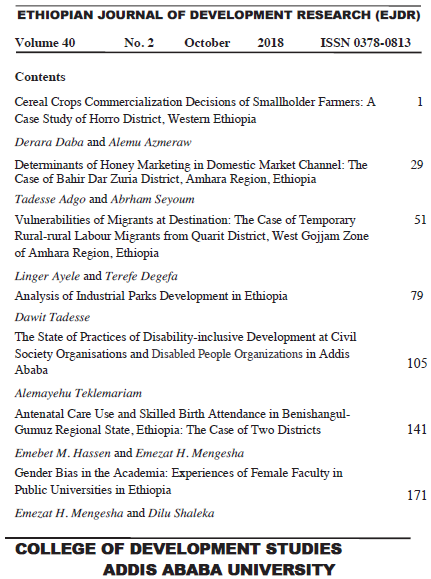Antenatal Care Use and Skilled Birth Attendance in Benishangul-Gumuz National Regional State of Ethiopia: The Case of Two Districts
Keywords:
Antenatal care use, skilled birth attendance, Benishangul- Gumuz, barriersAbstract
Delivery through skilled birth attendance (SBA) reportedly reduces
maternal and new-born mortality. Despite a steady rise in antenatal care
attendance over the past few years, which is believed to be a good
predictor of skilled delivery, utilization of skilled birth attendance in
Ethiopia is quite low. This study explored the underlying socio-cultural
factors and service-related constraints of SBA utilisation in Mengi
(rural) and Assosa (urban and rural) districts of Benishangul-Gumuz
Regional State of Ethiopia. The study was conducted during December
2012 to January 2013. Data was gathered using key informant
interviews with service providers, in-depth interviews and a focus group
discussion with women who were pregnant or had at least one child in
the recent past from the time of the data collection. The study was
supplemented by service statistics gathered through desk review.
Collected data were transcribed, categorized and thematically analysed.
Antenatal care utilization was consistently much higher than SBA
utilisation in both woredas. Factors that were primarily associated with
the low level of SBA utilization include: not believing in the need for
skilled health care, women’s lack of participation in decision-making in
their health care, not affording the cost of transport, lack of resource to
ensure birth preparedness, religion and traditional beliefs, poor state of
the service in skilled health care, distance from facility and lack of
transportation.
Downloads
Published
How to Cite
Issue
Section
License
Copyright (c) 2022 Emebet M. Hassen, Emezat H. Mengesha

This work is licensed under a Creative Commons Attribution 4.0 International License.


